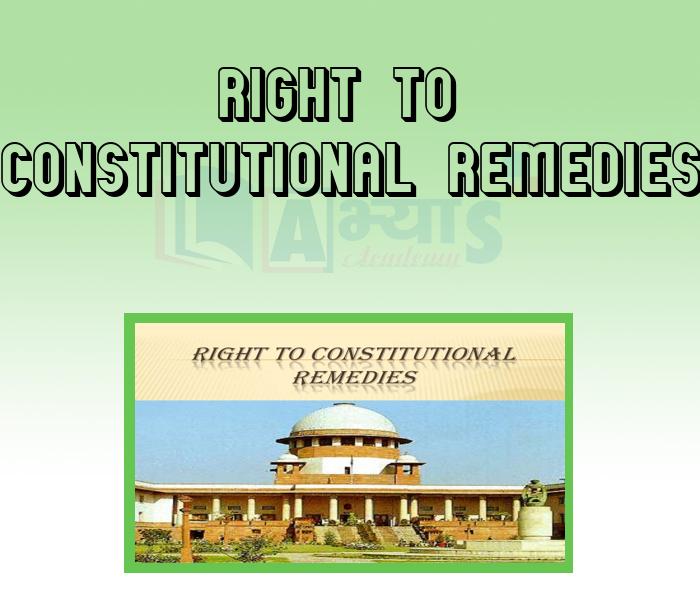Right To Constitutional Remedies










Right To Constitutional Remedies
There is a right in India which states that a person can move to Supreme court if he/she wants to get their fundamental rights protected. This right comes under article 32 for Supreme court an article 226 for the high court. It is known as the right to constitutional remedies. In this right, the Supreme court, as well as high court, is given the power to instill the fundamental rights. Furthermore, the power can be issued by local courts also to extend the rights. Although, there is one act which comes under the military law known as the court-martial which is exempted from this right.
Dr. B. R. Ambedkar said that article 32 is the soul of the constitution and it is at the very heart of it. Also, the Supreme court has included this in its basic structure doctrine. Furthermore, this right states that the right to move to the highest court cannot be rejected by any court expect provided by the constitution of India.
Who among the following has been given the power to enforce fundamental rights by the Constitution ? | |||
| Right Option : D | |||
| View Explanation | |||
Which of the following are correct : (a) Right to Constitutional remedies empowers the citizens to move a court of law in case of any denial of the fundamental rights. (b) The courts can issue various kinds of writs are habeas corpus, mandamus, prohibition, quo warranto and certiorari. | |||
| Right Option : C | |||
| View Explanation | |||
Which of the following are correct : (a) When a national or state emergency is declared, writs is suspended by the central government. (b) The courts can issue various kinds of writs. (c) In article 32 of the Indian Constitution, writs are mentioned. | |||
| Right Option : D | |||
| View Explanation | |||
Students / Parents Reviews [10]
Abhyas is a complete education Institute. Here extreme care is taken by teacher with the help of regular exam. Extra classes also conducted by the institute, if the student is weak.

Om Umang
10thBeing a parent, I saw my daughter improvement in her studies by seeing a good result in all day to day compititive exam TMO, NSO, IEO etc and as well as studies. I have got a fruitful result from my daughter.

Prisha Gupta
8thMy experience with Abhyas is very good. I have learnt many things here like vedic maths and reasoning also. Teachers here first take our doubts and then there are assignments to verify our weak points.

Shivam Rana
7thAbhyas Methodology is very good. It is based on according to student and each child manages accordingly to its properly. Methodology has improved the abilities of students to shine them in future.

Manish Kumar
10thIt was a good experience with Abhyas Academy. I even faced problems in starting but slowly and steadily overcomed. Especially reasoning classes helped me a lot.

Cheshta
10thOne of the best institutes to develope a child interest in studies.Provides SST and English knowledge also unlike other institutes. Teachers are co operative and friendly online tests andPPT develope practical knowledge also.

Aman Kumar Shrivastava
10thMy experience was very good with Abhyas academy. I am studying here from 6th class and I am satisfied by its results in my life. I improved a lot here ahead of school syllabus.

Ayan Ghosh
8thA marvelous experience with Abhyas. I am glad to share that my ward has achieved more than enough at the Ambala ABHYAS centre. Years have passed on and more and more he has gained. May the centre flourish and develop day by day by the grace of God.

Archit Segal
7thIt was good as the experience because as we had come here we had been improved in a such envirnment created here.Extra is taught which is beneficial for future.

Eshan Arora
8thI have spent a wonderful time in Abhyas academy. It has made my reasoning more apt, English more stronger and Maths an interesting subject for me. It has given me a habbit of self studying
